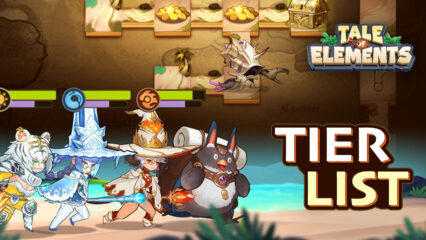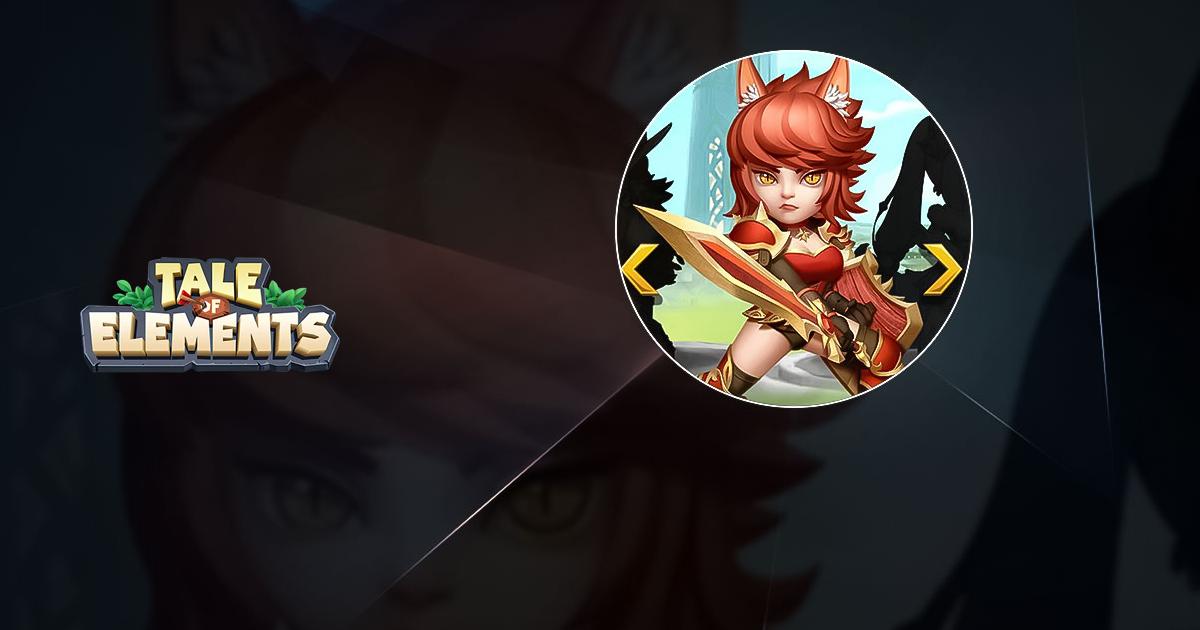Tale of Elements: Survivors - Teambuilding Guide
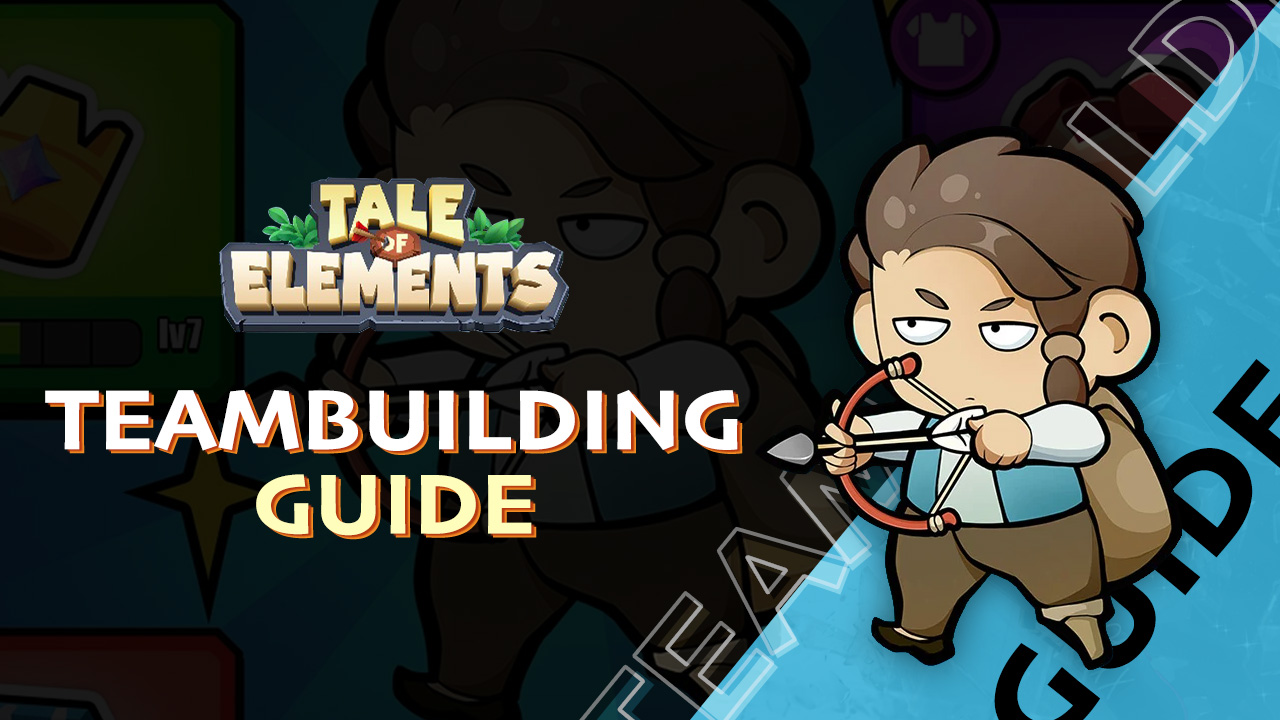
One of the most important realizations when you play Tale of Elements: Survivors is that a powerful team is at the top of your priority list once you understand the basics of the game. The game gives the players tons of combinations on how they can build their teams and while the number of characters may be a bit too much to handle, there is a specific formula on how to choose the best units when teambuilding in this game so that you’ll have a more efficient squad in combat.
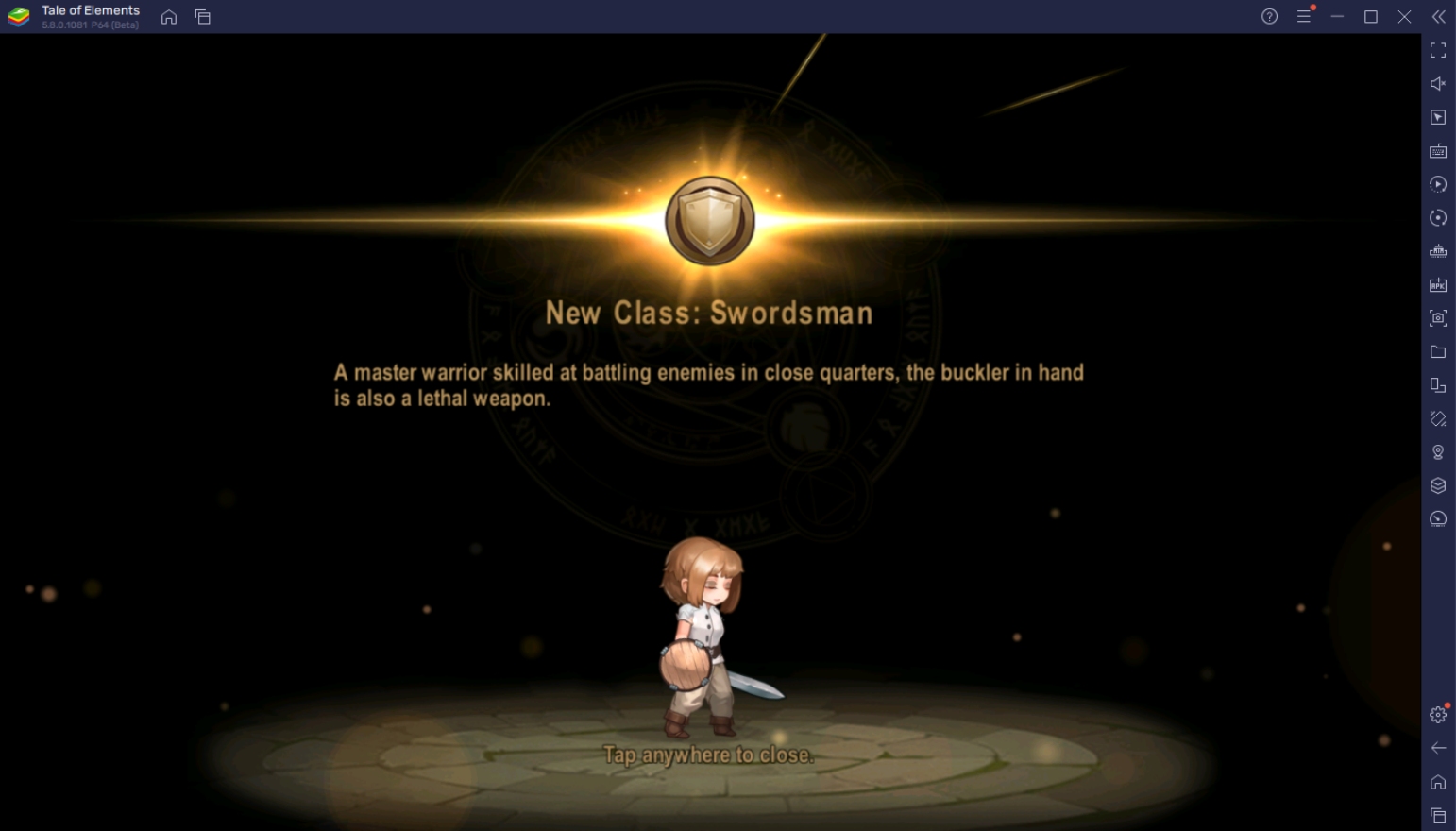
The people who have checked out our Beginner’s Guide will have a general idea of the importance of team building in this game. The game uses a gacha system where players can randomly acquire mercenaries in the guild that have different stat distributions and classes. The rarest types of mercenaries are the unique characters labeled SP. The SS mercenaries are the next best thing, followed by the S mercenaries which should be the minimum standard for players to use on their teams.
Class & Roles
Each mercenary in Tale of Elements: Survivors has a unique class and each class has its own role in the team. The primary classes that players will unlock at the beginning of the game are the swordsman, archers, and nuns (which represent the Tank, DPS, and Support roles). Players can only include up to four mercenaries on their teams, so the best formula to follow is to include one tank, two DPS, and one support mercenary to maximize their efficiency in combat.
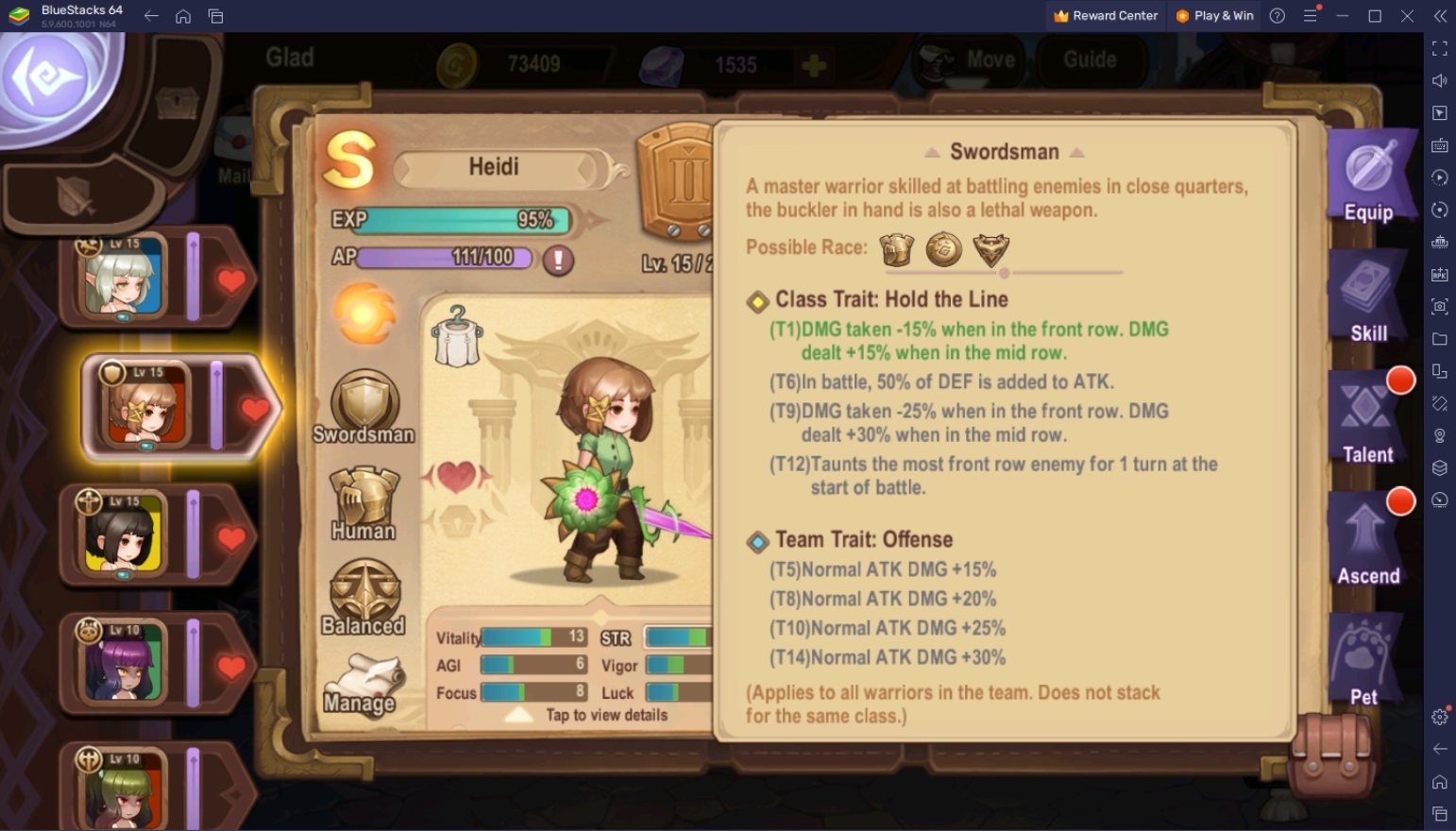
Overall, there are 8 different classes in the game (swordsman, nun, archer, elementalist, assassin, wizard, clergyman, and berserker). No matter what heroes they have in their collection, it’s always a good idea to have a variety of classes in your squad to have different types of damage coverage that will make it easier for your squad to deal with different kinds of enemies with unique resistances and weaknesses. The combination is up to you, but it’s still a good idea to have backup heroes from different classes just in case.
Positioning
Each class has its own role. Each role is expected to be placed in specific positions to maximize its efficiency. For example, the tank classes are expected to be at the forefront of the team so that they can soak the damage that the enemy will throw at them since they have the highest defensive stats in the game. Magic casters such as wizards and nuns will enjoy being placed in the rear-most part of the team since they can easily get killed by even the smallest amount of damage.
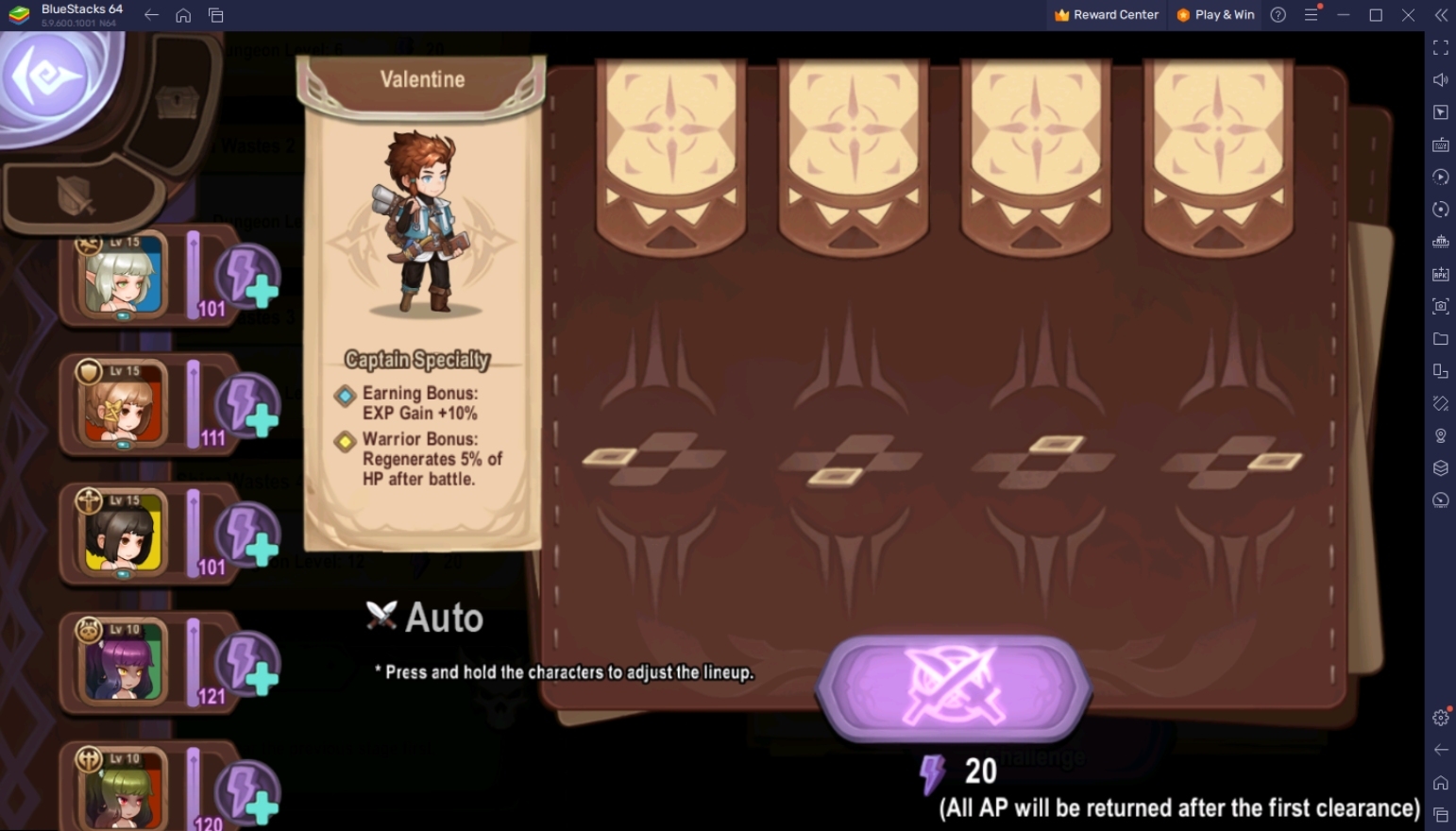
For the middle spaces, it doesn’t matter which ones you place as long as it’s not the tank. Some players opt to place additional off-tanks in the middle that also act as a support, which is the specialization of the clergyman class but if you’re a beginner, it’s always best to stick to the standard formula. It’s a good idea to understand the stat distribution of your team to learn which mercenaries are best suited in the frontline and which ones need to be protected. To do that, simply go on the Team tab to check out the mercenaries you currently own.
Elements & Affinities
Tales of Elements: Survivors feature an elemental affinity system that directly affects the strength and weakness relationship of each mercenary. For example, Nature is weak to Fire while Water is weak to Nature, and so on. There are five elements in the game which are Fire, Water, Nature, Light, and Dark. These elemental relationships are important to keep in mind as they determine whether your team has an increased or decreased chance of defeating a certain opponent.
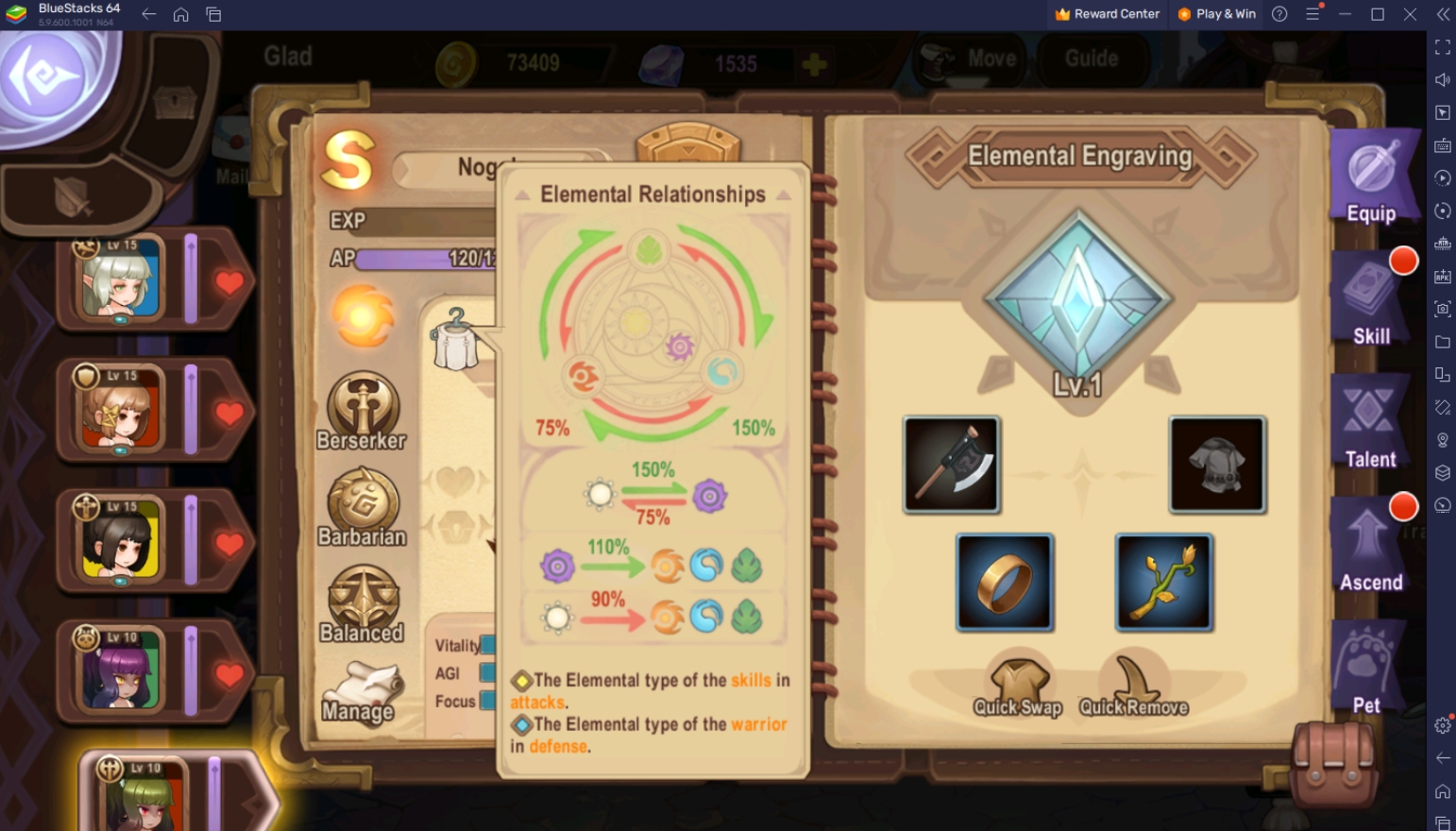
As we mentioned, there is a specific formula for building your team. Some players like to run mono-element teams, but there is no merit in doing so in this game. Instead, the proper way is to diversify the elemental affinities on your team to have coverage between strengths and weaknesses. The best formula is to add a Nature, Water, Fire, and Dark hero to your team since those elements provide the best coverage to gain an offensive advantage over most teams in the arena.
Skills & Abilities
One unique part about Tale of Elements: Survivors is their Skill Card system. Each mercenary has its own unique skill card that they unlock permanently for all characters that belong to the same class. These skill cards can be used by other mercenaries that belong to the same class and proves to be an advantage when building a team because you can choose to equip a mercenary with specific abilities that will complement the specializations of your other mercenaries in the team.
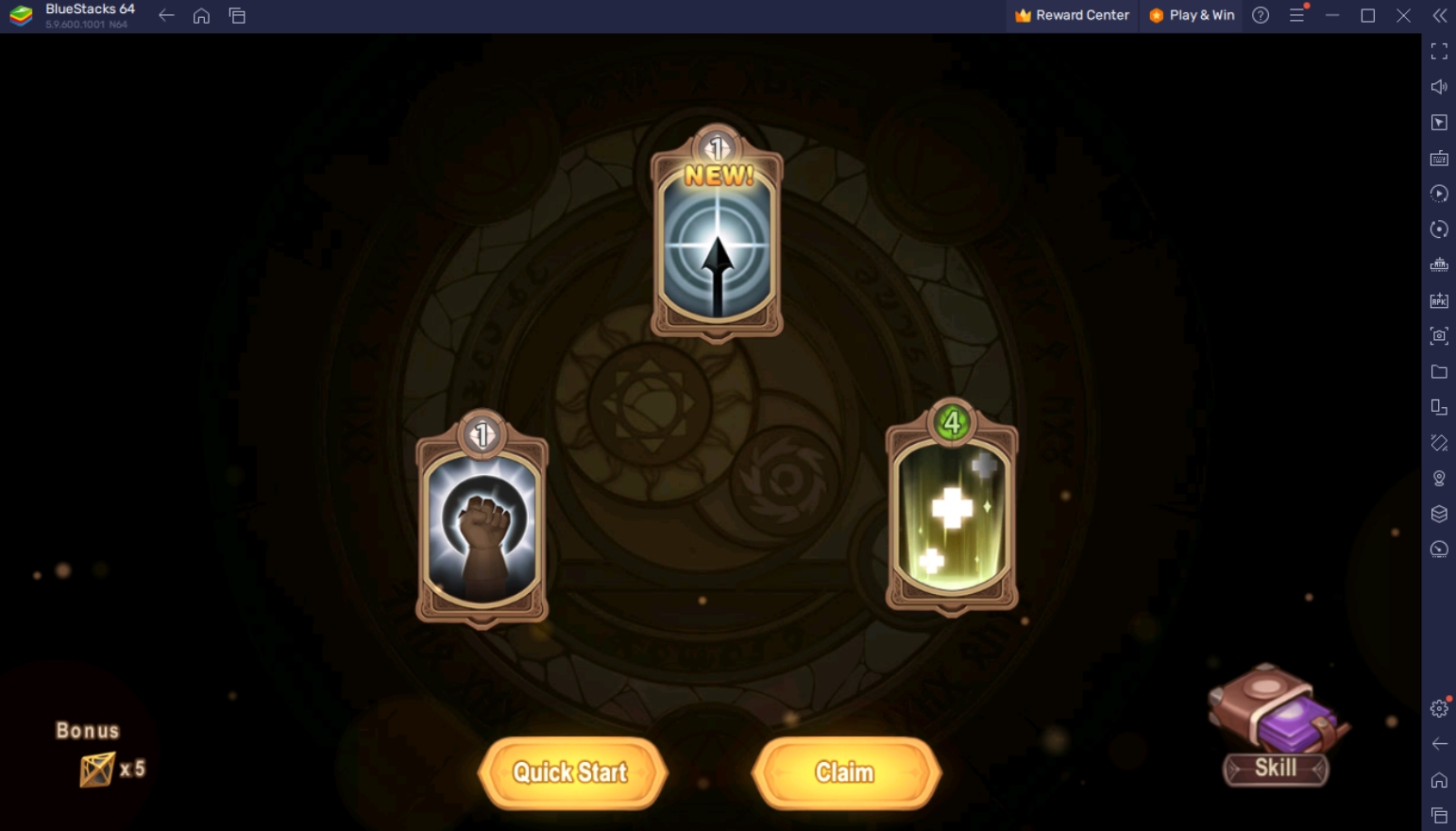
Remember that each mercenary skill also has its own elemental affinity. These attacks will do bonus damage to enemies according to their elemental affinity, so it’s a good idea to have a variety of cards available when you’re building your team. Balance out the number of offensive and supportive abilities on your team so that you don’t end up being flooded by either card types whenever you have to make a move in combat.
Captain Bonus
The Captain Bonus is something that beginners shouldn’t take too much thinking about in the early game as it isn’t something they can control when they start out. The Captain Bonus is what your leader, Valentine, provides to the entire team despite not being an active member during the combat phase. The Captain is essential because they provide a powerful passive bonus to your mercenaries during combat, which proves to be invaluable in the PvE game modes where the enemies are annoying to deal with.
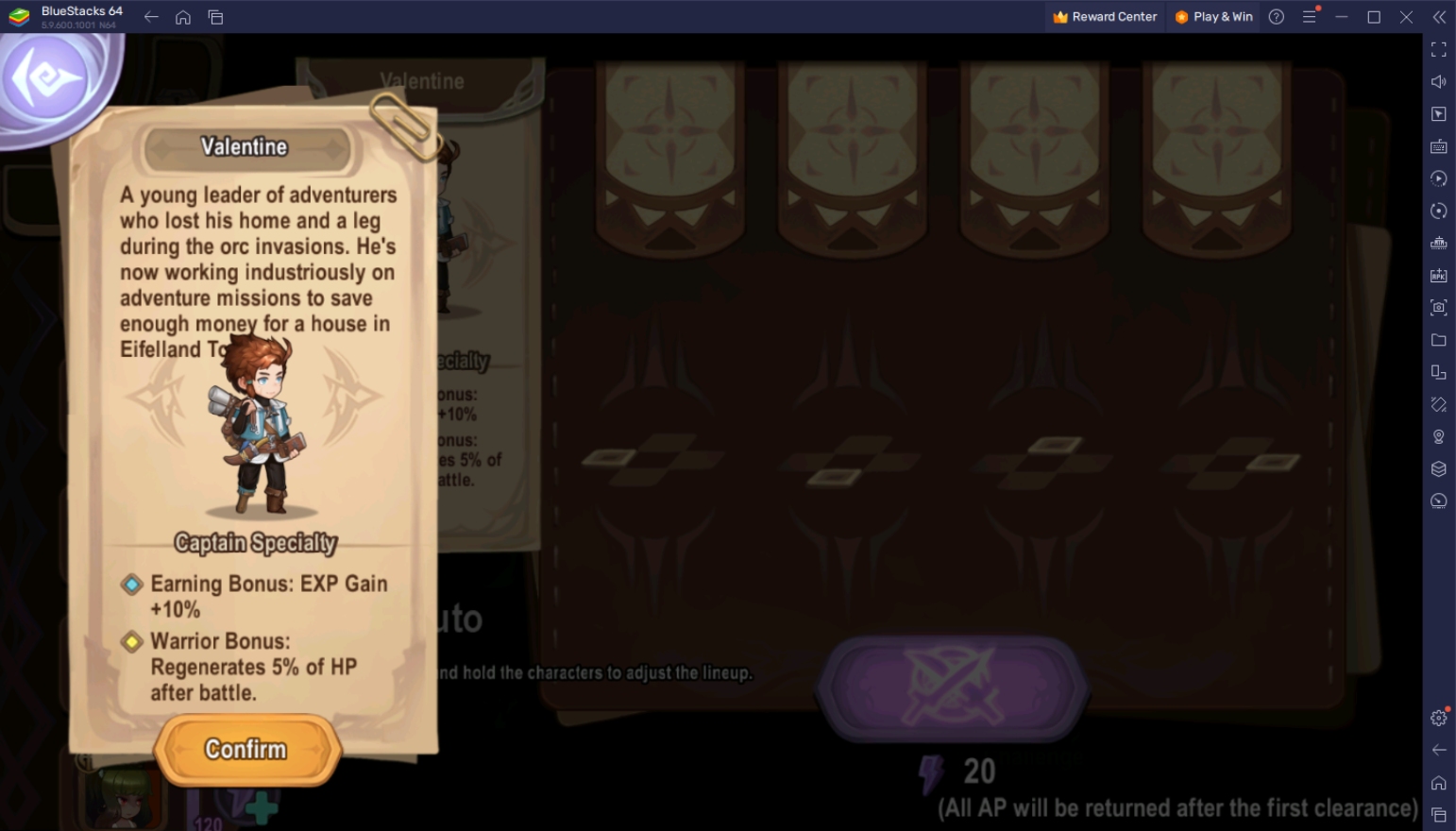
It is unclear whether the game might release more Captains in the future, but for now, Valentine is a staple character in the story and in your squad. He is enough to carry your team to victory. However, his abilities are very basic and a new captain with better skills will definitely be welcome in the future once you unlock the other stages in the campaign.




